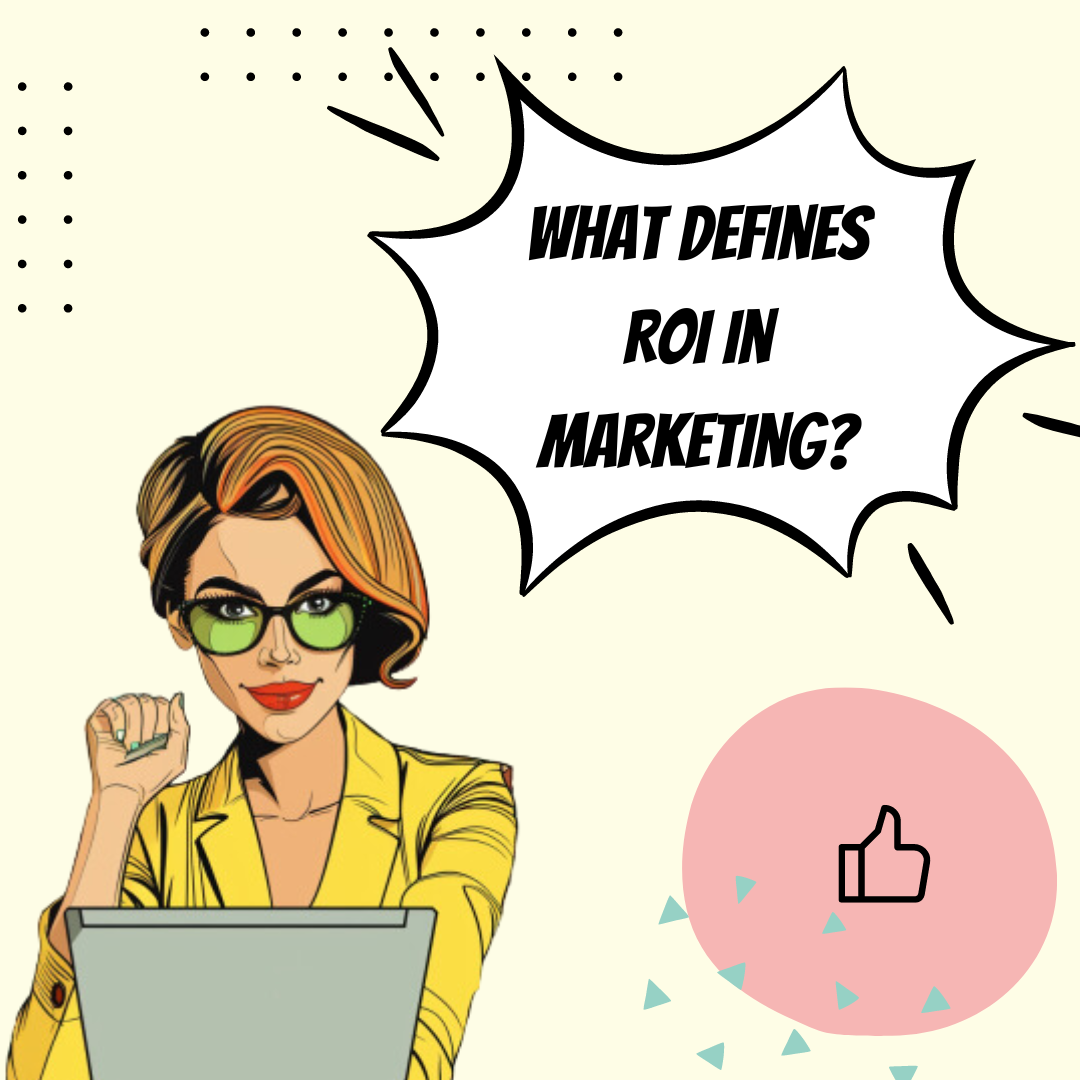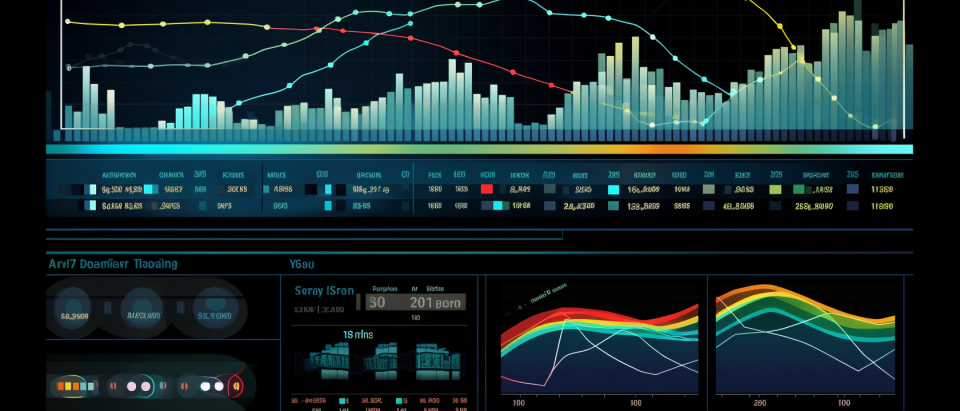Key Takeaways
✅ Marketing ROI (Return on Investment) is a critical metric for evaluating the efficiency and profitability of marketing campaigns, helping businesses allocate resources effectively.
✅ Performance metrics such as Click-Through Rates (CTR), Conversion Rates, Customer Acquisition Cost (CAC), and Customer Lifetime Value (CLV) provide valuable insights into campaign effectiveness and customer behavior.
✅ Regular monitoring and analysis of these metrics are essential for optimizing marketing strategies, improving overall performance, and driving sustainable growth.

Introduction
In the fast-paced world of marketing, where every campaign, every advertisement, and every promotional effort matters, understanding the impact of your strategies is paramount. It's not just about creating eye-catching visuals or crafting persuasive messages; it's about measuring the return on investment (ROI) and other performance metrics that define success.
Welcome to a comprehensive guide that unveils the art and science of calculating and interpreting ROI and performance metrics in marketing.
Navigating the Marketing Landscape
The marketing landscape is a dynamic, ever-evolving arena where businesses strive to capture the attention and loyalty of their audience. It's a world of creativity, innovation, and strategic brilliance. Yet, in the midst of this creative whirlwind, lies the need for cold, hard numbers—a need to measure the effectiveness of every marketing initiative.
The ROI Dilemma
Return on Investment (ROI) is the beacon that guides marketing decisions. It's the answer to the age-old question: "Is our marketing working?" In an era where data is king, ROI is the key that unlocks the door to marketing success.
Beyond ROI: Performance Metrics
But ROI is just one piece of the puzzle. Beyond the financial aspect, there are a plethora of performance metrics that provide insights into the effectiveness of marketing campaigns. Metrics like click-through rates (CTR), conversion rates, customer acquisition cost (CAC), and customer lifetime value (CLV) offer a panoramic view of marketing performance.
The Quest for Data-Driven Decisions
In an increasingly data-driven world, making decisions based on intuition or guesswork is no longer sufficient. Businesses need to understand the value they derive from their marketing investments, identify areas for improvement, and optimize their strategies. This quest for data-driven decisions is the driving force behind the need to calculate and interpret ROI and performance metrics in marketing.
The ROI Formula
At the heart of measuring marketing success lies a simple yet powerful formula:
ROI = (Net Profit - Marketing Costs) / Marketing Costs
This formula encapsulates the essence of ROI calculation, where net profit is the revenue generated from marketing efforts minus the costs incurred. Understanding this formula is the first step in deciphering the impact of your marketing campaigns.
ROI Calculation in Practice
Calculating ROI is not a theoretical exercise; it's a practical endeavor that demands accurate data and precise measurements. This section will delve into the nuts and bolts of ROI calculation, covering topics such as revenue attribution, marketing costs, and the significance of tracking data accurately.
Interpreting the ROI Results
Once you've crunched the numbers, the next step is interpretation. What does your ROI tell you about the effectiveness of your marketing efforts? Is it positive, indicating that your marketing investments are yielding a profit? Or is it negative, suggesting that adjustments are needed? This section will guide you through the process of interpreting ROI results and making data-driven decisions.
The Multifaceted World of Performance Metrics
While ROI is a critical metric, it's just one piece of the puzzle. Marketing success is a multifaceted concept, and understanding performance metrics in-depth is essential. This section will explore a spectrum of performance metrics, from engagement metrics like click-through rates (CTR) to financial metrics like customer acquisition cost (CAC) and customer lifetime value (CLV).
Click-Through Rates (CTR)
Click-through rates (CTR) are a crucial metric in digital marketing, measuring the effectiveness of online advertising campaigns. A high CTR indicates that a significant portion of viewers found the ad compelling enough to click and learn more.
Improving CTR can involve refining ad copy, targeting the right audience, and optimizing the visual elements of the ad. Monitoring CTR helps marketers adjust their strategies to increase engagement and drive traffic. It serves as a vital indicator of the initial interest and relevance of an ad to its intended audience.

Conversion Rates
Conversion rates measure the percentage of users who take a desired action, such as making a purchase or signing up for a newsletter. High conversion rates signify that a marketing campaign is effectively persuading users to complete the desired goal.
To improve conversion rates, businesses can focus on optimizing their landing pages, providing clear calls to action, and ensuring a seamless user experience. Analyzing conversion rates helps identify areas for improvement in the sales funnel and overall marketing strategy. It is a key metric for assessing the efficiency of marketing efforts in turning prospects into customers.
Customer Acquisition Cost (CAC)
Customer Acquisition Cost (CAC) is the total expense incurred to acquire a new customer, including advertising, marketing, and sales costs. It is a vital metric for evaluating the effectiveness and sustainability of marketing strategies. Lowering CAC can be achieved through more targeted marketing, improving conversion rates, and leveraging cost-effective channels.
Understanding CAC in relation to customer lifetime value (CLV) is crucial for assessing long-term profitability. Businesses strive to optimize CAC to ensure that the cost of acquiring new customers does not exceed the value they bring.

Customer Lifetime Value (CLV)
Customer Lifetime Value (CLV) is a metric that estimates the total revenue a business can expect from a single customer throughout their relationship. It helps companies understand the long-term value of their customers and guides investment in retention and acquisition strategies.
Increasing CLV can be achieved through enhancing customer satisfaction, encouraging repeat purchases, and offering personalized experiences. It is essential for businesses to balance the cost of acquiring customers (CAC) with their CLV to ensure sustainable growth. Focusing on CLV allows companies to identify high-value customers and tailor their marketing efforts to maximize profitability.
Data-Driven Decision-Making
Interpreting marketing metrics is not just about numbers; it's about making informed decisions. This section will provide insights into how to use marketing metrics to optimize your strategies, identify areas for improvement, and enhance your marketing ROI.
The Journey Toward Marketing Excellence
In conclusion, measuring marketing ROI and performance metrics is not just a best practice; it's the essence of modern marketing. It's a journey toward understanding the value of your marketing investments, optimizing your strategies, and making data-driven decisions that lead to marketing excellence.
As we embark on this exploration of marketing metrics, may your campaigns be more effective, your decisions be data-driven, and your ROI be a testament to your marketing prowess. Welcome to the world where numbers matter, where data is the compass that guides you toward marketing success.
Understanding Marketing ROI
In the realm of marketing, where every dollar spent should ideally translate into value and profits, the concept of Return on Investment (ROI) reigns supreme. Understanding marketing ROI is not just a best practice; it's an essential skill that enables businesses to gauge the effectiveness of their marketing efforts. In this section, we delve into the intricacies of marketing ROI, demystifying the formula behind it, and exploring the benchmarks that define exceptional ROI.
The ROI Formula
At its core, marketing ROI is a straightforward calculation, encapsulated by the formula:
ROI = (Return – Investment) / Investment
In this formula, "Return" represents the revenue generated from marketing efforts, while "Investment" encompasses the costs incurred to execute those efforts. ROI is the ratio that reveals how much value you're extracting from your marketing investments.
The 5:1 Rule of Thumb
While there's no one-size-fits-all benchmark for marketing ROI, a common rule of thumb is a 5:1 ratio. In simpler terms, for every $1 invested in marketing, businesses aim to generate $5 in revenue. This ratio serves as a baseline, indicating a reasonable return on marketing investments.
Exceptional ROI: A 10:1 Ratio
While the 5:1 ratio is a sound benchmark, exceptional marketing ROI often reaches a 10:1 ratio. Achieving this level of ROI is a testament to the efficiency and effectiveness of your marketing strategies. It signifies that for every $1 spent, you're reaping a remarkable $10 in revenue.
Other Key Performance Metrics in Marketing
Marketing success extends beyond ROI; it encompasses a spectrum of performance metrics that provide a holistic view of your efforts. These metrics shed light on different facets of marketing effectiveness, offering valuable insights into the performance of campaigns and strategies.
Conversion Rate
Conversion rate is a fundamental metric that measures the percentage of users who take a desired action, such as making a purchase, signing up for a newsletter, or requesting more information. It reflects the effectiveness of your marketing funnel and the ability to turn prospects into customers.
Cost Per Lead (CPL)
Cost per lead calculates the amount spent to acquire a single lead, often through actions like filling out a form or expressing interest in a product or service. It helps businesses assess the efficiency of lead generation efforts and budget allocation.
Customer Acquisition Cost (CAC)
CAC focuses on the financial aspect of acquiring new customers. It considers all expenses related to marketing and sales efforts, providing a clear picture of the investment required to bring in new customers.
Social Media Engagement
In the digital age, social media engagement is a crucial metric that measures the interactions and reactions your content receives on social platforms. It gauges brand awareness, audience engagement, and content effectiveness.

Customer Lifetime Value (CLV)
Customer lifetime value represents the total revenue a business can expect to earn from a customer throughout their entire relationship. It's a forward-looking metric that guides customer-centric strategies and retention efforts.
Insights Through Metrics
Each of these performance metrics offers unique insights into the effectiveness of marketing campaigns and strategies. They serve as a compass, guiding businesses toward optimization and data-driven decision-making. Whether it's improving conversion rates, reducing CPL, or maximizing CLV, these metrics provide actionable data to refine marketing efforts and enhance overall performance.
As we navigate the realm of marketing metrics, may your understanding of ROI and performance metrics empower you to make informed decisions, optimize your strategies, and achieve exceptional marketing success. Welcome to the world of data-driven marketing, where numbers are your allies in the pursuit of excellence.
Case Studies on Marketing ROI and Performance Metrics
In the dynamic world of marketing, success stories are often crafted by those who understand the power of data and metrics. Let's dive into real-world case studies that showcase how businesses have harnessed ROI and performance metrics to evaluate and elevate their marketing strategies.

Case Study 1: eComPro - Doubling ROI Through Data-Driven Decisions
The Challenge: eComPro, an e-commerce startup, faced fierce competition in the online retail space. They needed a way to stand out in the crowded market and ensure their marketing investments were paying off.
The Solution: eComPro implemented a comprehensive data tracking and analysis system. They closely monitored their marketing campaigns, tracking key metrics such as click-through rates (CTR), conversion rates, and customer acquisition cost (CAC). They used this data to identify which marketing channels and campaigns were most effective.
The Results: By optimizing their marketing efforts based on data insights, eComPro doubled their ROI within a year. They shifted their budget toward high-performing channels, improved ad creatives, and fine-tuned their targeting strategies. Their success story became a testament to the impact of data-driven decisions.
Case Study 2: TechGenius - Mastering the Art of Social Media Engagement
The Challenge: TechGenius, a tech startup, aimed to establish a strong presence on social media platforms but struggled to engage their audience effectively.
The Solution: They decided to focus on social media engagement metrics such as likes, shares, and comments. Using data analytics tools, they tracked which types of content received the most engagement and which time of day their audience was most active.
The Results: TechGenius saw a significant increase in social media engagement within months. By consistently delivering content that resonated with their audience, they not only built a loyal following but also improved brand visibility and awareness.
Challenges in Measuring Marketing ROI and Performance Metrics
While the success stories above demonstrate the immense potential of ROI and performance metrics, measuring them isn't always a walk in the park. Businesses may encounter several challenges along the way.
The Video and Blog Conundrum
One common challenge is linking hard revenue numbers to marketing content like videos and blogs. These types of content often serve as brand-building tools rather than direct conversion drivers. Measuring their ROI can be elusive, requiring creative approaches such as tracking brand sentiment or engagement metrics.
The Time Frame Dilemma
Determining the appropriate time period for ROI calculation can also be tricky. Some marketing efforts may yield results immediately, while others might take months or even years to bear fruit. Businesses must strike a balance between capturing short-term gains and recognizing the long-term impact of their marketing strategies.
In the face of these challenges, businesses must remain agile, adaptable, and committed to data-driven decision-making. While the path to measuring marketing ROI and performance metrics may be paved with complexities, the rewards are often well worth the effort. With the right strategies and tools in place, businesses can navigate these challenges and unlock the full potential of data-driven marketing.
Best Practices in Measuring Marketing ROI and Performance Metrics
In the quest for marketing success, data-driven decision-making is the compass that guides businesses to their destination. To navigate this landscape effectively, it's essential to embrace best practices in measuring marketing ROI and performance metrics. Here, we unravel the strategies that separate the leaders from the followers.
1. Set Clear Marketing Goals
Clear, well-defined goals are the cornerstone of effective measurement. Before embarking on any marketing campaign, articulate your objectives. Whether it's increasing brand awareness, boosting conversions, or expanding market share, your goals provide the framework for measuring success.
2. Choose the Right Metrics
Not all metrics are created equal. To measure success accurately, align your metrics with your goals. If you aim to improve brand awareness, metrics like social media engagement and brand sentiment may be more relevant than immediate sales figures.
3. Data Is Your North Star
In a world awash with data, decisions should be driven by insights. Implement robust data tracking and analytics tools to gather accurate, real-time data. This data empowers you to make informed decisions, optimize campaigns, and identify areas for improvement.

4. Continuous Optimization
Marketing is not a one-and-done endeavor; it's an iterative process. Continuously analyze your metrics, assess performance, and refine your strategies. Use A/B testing, split testing, and experimentation to uncover what works best for your audience.
5. Customer-Centric Focus
Understand your audience's journey from awareness to conversion. Metrics should provide insights at every stage, enabling you to tailor your strategies to meet their needs. Customer-centric marketing is the path to lasting success.
6. Attribution Modeling
Attribution modeling assigns value to each touchpoint in the customer journey. It helps you understand the impact of various marketing channels and campaigns. By attributing revenue accurately, you can allocate resources wisely.

7. Benchmarking
Benchmark your metrics against industry standards and competitors. This contextualizes your performance and highlights areas for improvement. Benchmarking is a compass that guides your strategies toward excellence.
8. Educate and Empower Your Team
Ensure your team understands the importance of measurement. Provide training and resources to empower them to make data-driven decisions. A united, data-savvy team is the driving force behind marketing success.
9. Adapt to Market Trends
The marketing landscape is ever-evolving. Stay informed about emerging trends and technologies. Adapt your strategies to embrace innovation and remain relevant in a dynamic market.
10. Communicate Insights
Effective measurement is not just about data collection; it's about sharing insights. Communicate findings with stakeholders, fostering a culture of data-driven decision-making throughout your organization.
In the world of marketing, success is defined by those who not only embrace data but also wield it as a powerful tool. By setting clear goals, choosing the right metrics, and continuously optimizing strategies, businesses can navigate the complex landscape of marketing ROI and performance metrics with confidence. The journey to marketing excellence is guided by best practices that illuminate the path to success.
Conclusion: Unlocking Marketing Success Through Data
In the realm of marketing, where strategies are crafted with creativity and executed with precision, the true measure of success lies in the data. The journey we've embarked on through this article has illuminated the path to understanding and harnessing marketing ROI and performance metrics. As we draw this guide to a close, let's recap the essential insights and reaffirm the pivotal role of these metrics in achieving business success.
A Journey of Understanding
Our journey began with an exploration of Marketing ROI, the beacon that guides marketing decisions. We deciphered the formula, the benchmarks, and the exceptional ratios that define marketing success. We learned that ROI is not a solitary metric but a multifaceted gem that reflects the value of marketing investments.
Beyond ROI: A Spectrum of Insights
Beyond ROI, we ventured into a world of performance metrics that provide a holistic view of marketing effectiveness. From conversion rates that measure the effectiveness of your marketing funnel to customer lifetime value that guides customer-centric strategies, these metrics offer unique insights into the performance of campaigns and strategies.
Best Practices: The Compass to Success
Armed with knowledge, we explored best practices in measuring marketing ROI and performance metrics. We uncovered the importance of clear goals, the relevance of choosing the right metrics, and the power of data-driven decision-making. Continuous optimization, customer-centricity, and attribution modeling emerged as strategies that separate the leaders from the followers.
A Culture of Data-Driven Excellence
We emphasized the significance of educating and empowering your team, ensuring that data-driven decision-making becomes a part of your organizational DNA. We underscored the importance of adapting to market trends and benchmarking your performance against industry standards and competitors.
The Path Forward
As we conclude our journey through the world of marketing ROI and performance metrics, one thing is clear: success in marketing hinges on your ability to measure and interpret the impact of your efforts. In an age where data is the compass that guides businesses, measuring and interpreting ROI and performance metrics is not just a best practice; it's a strategic imperative.
Every click, every conversion, and every interaction holds significance. The data you gather and the insights you derive are the keys that unlock the doors to marketing excellence. With the right strategies, tools, and a commitment to continuous improvement, businesses can navigate the complex landscape of marketing metrics with confidence.
As you embark on your own journey toward marketing success, may your strategies be optimized, your decisions be data-driven, and your ROI be a testament to your marketing prowess. Welcome to a world where numbers matter, where data is the currency of success, and where your journey toward marketing excellence begins.












